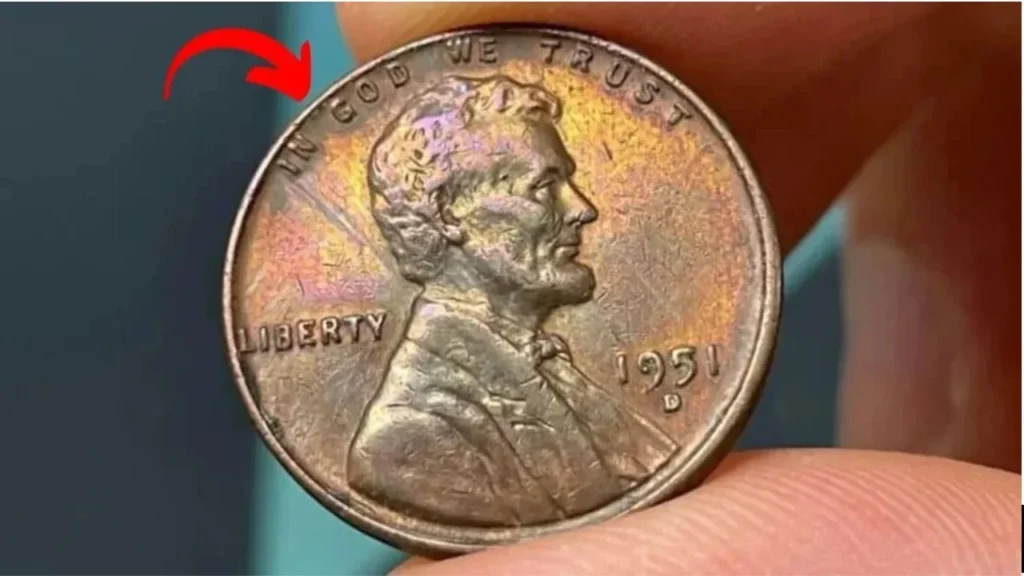
1943 Lincoln
The $630K Lincoln Wheat Penny: A Tiny Error That Created a Treasure
In the vast world of coin collecting, where historical significance and rarity dictate astronomical values, a simple mistake can transform an ordinary coin into an extraordinary treasure. Such is the case with the legendary 1943 Lincoln Wheat Penny — a coin that, under normal circumstances, would be worth just a few cents. However, due to a rare minting error, one of these pennies fetched a staggering $630,000 at auction, stunning collectors and igniting renewed interest in pocket change across the country.
The Birth of the Lincoln Wheat Penny
First introduced in 1909 to honor the 100th birthday of President Abraham Lincoln, the Lincoln Wheat Penny marked a major shift in American coin design. It was the first U.S. coin to feature a historical figure, and its reverse side displayed two stylized wheat stalks, giving it its familiar nickname. Minted until 1958, the Lincoln Wheat Penny is a cherished classic among numismatists, with billions of them produced over the decades.
However, none are quite as captivating—or valuable—as the 1943 copper Lincoln Wheat Penny.
Why 1943 Pennies Are Special
During World War II, copper was a critical material needed for wartime production — primarily for shell casings, telephone wires, and other military equipment. To conserve copper for the war effort, the U.S. Mint decided to strike 1943 pennies using zinc-coated steel instead of the usual copper alloy. These “steel cents” have a silver-like appearance and were produced by the millions in all three U.S. mints: Philadelphia, Denver, and San Francisco.
But something unusual happened during this transition.
A small number of 1943 pennies were mistakenly struck on leftover copper planchets (the blank discs used for coin production) from the previous year. These rare copper versions of the 1943 penny were never meant to exist. But due to human oversight and the chaos of wartime minting, a few slipped through the system.
The $630,000 Penny: A Coin Collector’s Dream
One of these elusive 1943 copper pennies eventually surfaced and was sold at auction for an astounding $630,000. This coin’s value stems from its extreme rarity — estimates suggest that fewer than 20 authentic examples exist today. Each one is a prized artifact, and their value only continues to rise as collectors compete for ownership.
What makes this particular penny so desirable isn’t just its rarity — it’s also in near-perfect condition. Coins are graded based on their preservation, and this one scored exceptionally high, further increasing its worth.
How the Error Happened
The exact reason these copper pennies were minted is still debated, but experts believe that a few copper blanks were mistakenly left in the coin presses when production switched to steel. The minting equipment struck these copper planchets with the 1943 dies, unknowingly creating one of the most valuable U.S. coins in existence.
This wasn’t an isolated incident either. Similar mistakes happened in 1944 when the mints reverted back to copper. Some 1944 steel pennies also made their way into circulation and are considered just as rare.
Spotting a Fake: Buyer Beware
Because of its legendary status and huge market value, the 1943 copper penny has been heavily counterfeited. Some forgers plate steel pennies with copper or alter the dates on 1945 or 1948 copper cents to resemble the rare 1943 version. True 1943 copper pennies weigh slightly more than their steel counterparts and won’t stick to a magnet — a quick and easy test.
Serious collectors often seek professional authentication from grading agencies like PCGS (Professional Coin Grading Service) or NGC (Numismatic Guaranty Corporation) before purchasing or selling these coins.
Could You Have One?
It may seem far-fetched, but stories abound of people discovering these rare pennies in change jars, old piggy banks, or inherited coin collections. Given their massive value, it’s worth examining any 1943 penny you come across — especially if it’s not magnetic and looks copper-toned. That one-cent coin could turn out to be worth hundreds of thousands of dollars.
The Allure of Error Coins
The story of the $630,000 Lincoln Wheat Penny highlights the captivating world of error coins — anomalies that escape the strict quality controls of the U.S. Mint and become highly coveted by collectors. These errors serve as time capsules of the past, small quirks in a system that generally prizes precision.
From a simple oversight in a busy wartime mint to becoming one of the most valuable coins in U.S. history, the 1943 copper penny proves that even the smallest mistake can lead to unimaginable fortune — especially when you keep your eyes open. So next time you sift through your loose change, remember: that “worthless” penny might just be a hidden treasure.
Thanks For Reading